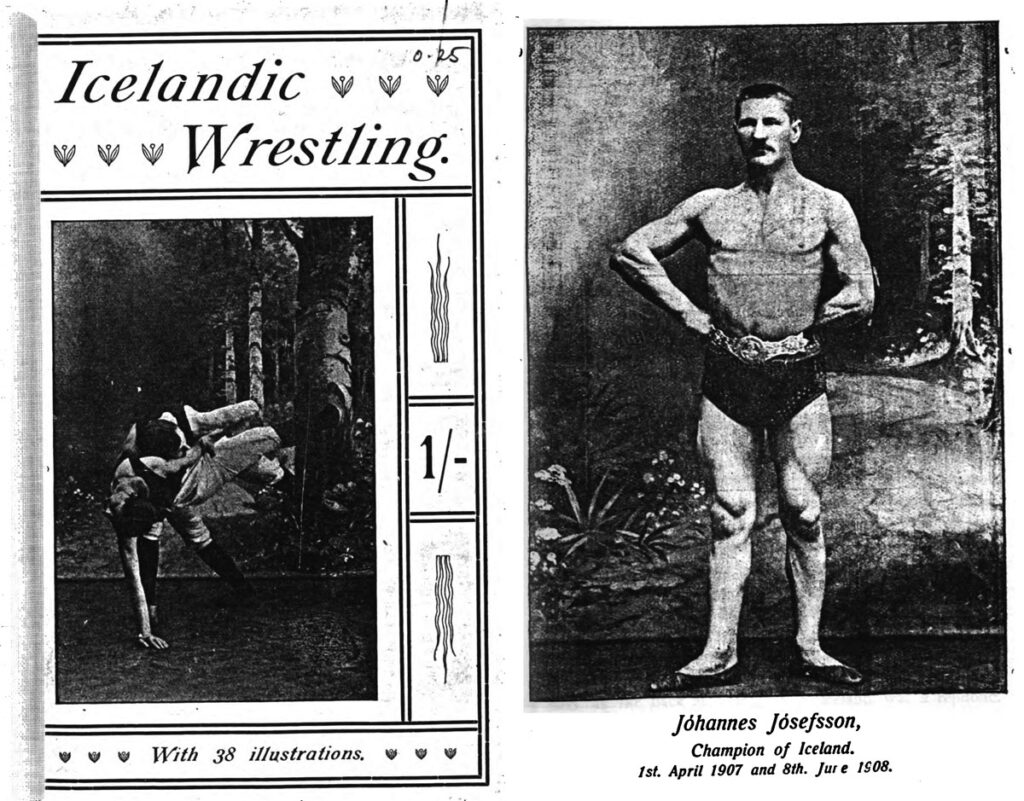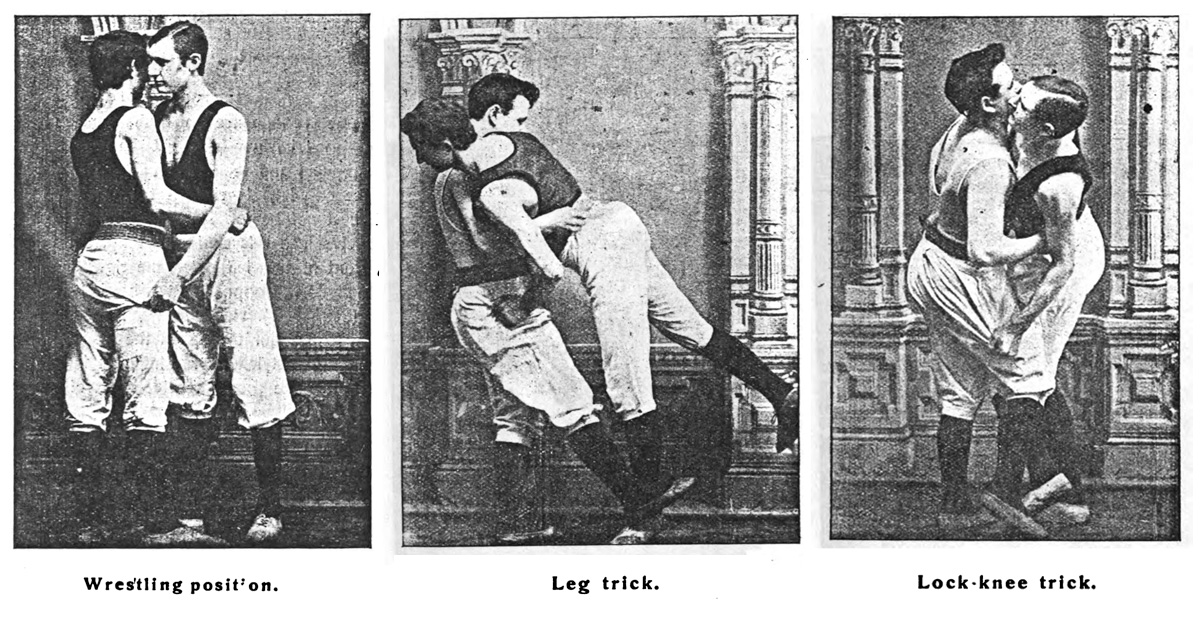I first learned about glíma, a unique form of Icelandic folk wrestling, from the the short film by Grímur Hákonarson called Bræðrabylta. The story focuses on two gay men in rural Iceland, whose primary way of acknowledging their affection for each other is through glíma. I was immediately struck by how different it looked from other forms of wrestling; opponents grasp each other’s waists in a pose that invokes dancing more than fighting. It was perfect for the plot of the film, and made me want to learn more about this variant of the sport.
Distinctive features in glíma include the fact that wrestlers stand upright, and are not allowed to crouch for leverage. They shake hands to begin a match, and then grasp each other’s waists. In the earliest days of the sport, that would mean gripping directly onto an opponents trousers, but since 1905 a special leather glíma belt has been worn. Grips established, the wrestlers must continually walk clockwise in a circle, the constant motion creating the opportunity for imbalance and offensive action. Traditionally, glíma matches are not held on mats, but on hard wooden floors. All of this taken together, you can see how a glíma match might look similar to dancing, at least until they start throwing each other around.
How somebody wins a glíma match is also unique. It’s only considered a loss if an area of the body between the elbows and knees touches the ground. That means a fall can be recovered by catching yourself with an outstretched hand, or landing on a knee or elbow. Of course those technique could be painful on a hard wooden floor. Simultaneously, the aggressor must remain standing, tossing their opponent with enough force to complete the fall without succumbing to it themselves. If they both fall down then it’s deemed a “brother fall” — which is what Bræðrabylta means in Icelandic — and they both get up and resume the match.
These unique elements of posture, footwork, and winning criteria combine to create a culturally specific sport that some in Iceland are working to have recognized on the UNESCO list of intangible cultural heritage. The question of why these specific attributes evolved in Iceland is explored in-depth on The Hero with a Thousand Holds podcast, in their episode on Iceland glíma. At over 2 hours and 17 minutes you may be reluctant to listen, but I highly recommend it. It’s incredibly well researched, provides relevant historical background on Iceland, and is well produced.
Another interesting English language resource is a 1908 book called Icelandic Wrestling, written by glíma champion Johannes Josefsson. It’s full of photos and techniques, illustrating 38 different positions and takedown methods. The author seems like an interesting guy, who after wrestling in Iceland did a stint in the Barnum & Baileys circus in the USA before returning to Reykjavík to run the Hotel Borg (where I stayed for a night in 2016).

As a final note, while I highly recommend the short film Bræðrabylta, it may be difficult to find online. However, if you haven’t seen them, you should absolutely check out both Rams and The County, two full-length films also by Grímur Hákonarson that are available in wider release. I think he’s my favorite Icelandic filmmaker.
